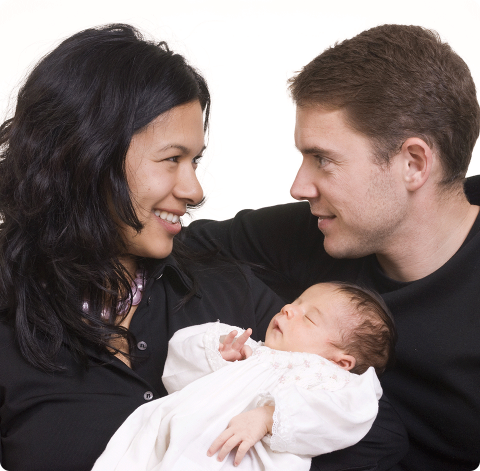Planning where to have your baby
Where you decide to give birth and with whom is a very personal decision. Whilst you are considering your decision you will probably take the following factors into consideration:
-
What options are available to me where I live?
-
Do I have any health issues which will affect the degree of risk to the baby?
-
What cultural or other life circumstances are going to impact on my choices?
-
How do any previous experiences of pregnancy or birth affect this decision?
-
What do I feel about each model of care?
Pre-existing health issues and the health of your baby or babies during pregnancy, will have an impact upon what options are available to you for your maternity care and place of birth.
The UK's National Institute of Health and Clinical Excellence (NICE 2008:13) recommends that all women should be offered the choice of planning birth at home, in a birth centre or caseload (1:1) midwifery program (midwife led care) or in a hospital labour ward (obstetric care). It is important that you know the risks and benefits of each option so that you can decide what is right for you and your baby. Giving birth is generally very safe for both you and your baby. The information we have on planning place of birth is not of good quality or quantity, but it does suggest that for women who plan to give birth at home or in a midwife-led unit/ program the likelihood of a normal birth is greater and there is less risk of intervention. If you are considering this option, it might be helpful to find out what the likelihood of being transferred into the hospital labour ward might be and how long this might take.
A hosptial labour ward will provide you with direct access to obstetricians, anaesthetists, neonatologists and other specialist care including epidural analgesia. If something does go unexpectedly and seriously wrong during labour at home or in a midwife-led unit or program, the outcome for you and the baby could be worse than if you were in a hospital labour ward with access to specialised care.
If you have a pre-existing medical condition or you have had a previous complicated birth, that makes your risk of developing complications higher during this next birth, and you will be advised to give birth in a hospital labour ward.
Tables 1 and 2 show medical conditions or situations in which there is increased risk for the woman or baby during or shortly after labour, where care in a hospital labour ward would be expected to reduce this risk.
Table 1. Medical conditions indicating increased risk suggesting planned birth at an obstetric unit
Disease Area |
Medical Condition |
|
Cardiovascular |
|
|
Respiratory |
|
|
Haematological |
|
|
Infective |
|
|
Immune |
|
|
Endocrine |
|
|
Renal |
|
|
Neurological |
|
|
Gastrointestinal |
|
|
Psychiatric |
|
Source: NICE (2014) Intrapartum care: Care of healthy women and their babies during childbirth. Link
Table 2. Other factors indicating increased risk suggesting planned birth at an obstetric unit
Factor |
Additional Information |
Previous Complication |
|
Current Pregnancy:Fetal Indications
|
|
Gynaecological History |
|
Source: NICE (2007) Intrapartum care: Care of healthy women and their babies during childbirth. Pg.12
The factors listed in Tables 3 and 4 are not reasons in themselves for advising birth in a hospital labour ward, but indicate that further consideration of birth setting may be required.
Table 3. Medical conditions indicating individual assessment when planning place of birth.
Disease Area |
Medical Condition |
Cardiovascular |
|
Haematological |
|
Infective |
|
Immune |
|
Endocrine |
|
Skeletal/Neurological |
|
Gastrointestinal |
|
Source: NICE 2008:47 link
Table 4. Other factors indicating individual assessment when planning place of birth.
Factor |
Additional Information |
Previous Complications |
|
Current Pregnancy |
|
Fetal Indications |
|
Previous gynaecological history |
|
Source: NICE 2008:48 link
References
QUICK FACTS
The UK's National Institute of Clinical Excellence's new draft guidelines for the care of healthy women and their babies, recommends that women should be advised to give birth in the following venues:
Home
For all 'low risk' women having a second or subsequent baby, because the rate of intervention is lower and the outcome for the baby is no different compared with an obstetric unit (hospital). For women having their first baby at home, there is a small increase in the risk of an adverse outcome for the baby (NICE 2014:7 link).
Birth Centre
For all 'low-risk' women, because the rate of intervention is lower and the outcome for the baby is no different compared with an obstetric unit (hospital) (NICE 2014:7 link).
1:1 midwifery
For all 'low-risk' women, because the rate of intervention is lower and the outcome for the baby is no different compared with an obstetric unit (hospital) (NICE 2014:7 link).

